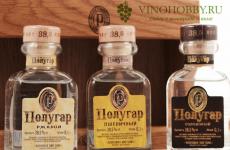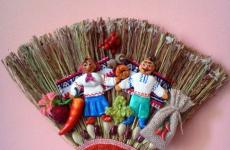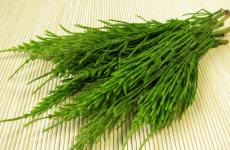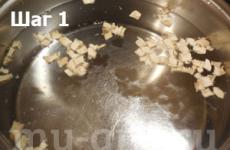Beneficial insects are our helpers. Trichogramma: a tiny bug for the harvest Excerpt describing Trichogramma
To become an eco-farmer and switch to organic farming we need to stop using pesticides. To do this, they need to be replaced with biological plant protection products, and read about one of these in our material.
It's no secret that the excessive use of pesticides, which began in the early days, has led to environmental degradation. In this regard, organic farming, in which only organic fertilizers and pesticides are used, has begun to gain increasing popularity.
How it works?
From May to August, pests on various plants begin to pupate, mate and lay their eggs. At this time, it is necessary to monitor the appearance of pests and predict egg deposits. It should also be taken into account that several outbreaks of insect activity may occur during this period. For example, the stem borer develops on corn before the cotton bollworm, so the crops have to be treated several times.
In agriculture, regular and variable trichogramma are used. The regular one is revived after being applied simultaneously, and the diapasonic one - several times at certain intervals. Thus, if diapazuyuschaya Trichogramma is introduced, the protection period will be longer.
Trichogramma lifespan in field conditions— 2-5 days. The female lays most of the eggs in the first three days, destroying the eggs of pests.
When and how much to contribute?
The period of application of Trichogramma is determined by the appearance of pests on various plants. At the same time, there are also standard timing for its application; at this time, pests are most active. So, for example, in mid-May, Trichogramma should be applied to crops of wheat, barley and peas, and at the end of the month - to protect cabbage, peppers, tomatoes and sugar beets. The insect is also used to treat corn and sunflowers in late June and July, respectively. It must be remembered that after the first detection of pest eggs, Trichogramma must be applied for two days.
If crops are susceptible to a large number of different pests, then several “dispersal” of Trichogramma can be done. For example, such plants include corn, cabbage and sunflower. Basically, two approaches are made to treat the crops and the difference between dispersal takes 10-14 days. The exceptions are orchards- in this case, trichogramma is sprayed three times with the same interval.
The effective application rate for Trichogramma is 100-200 thousand individuals per hectare. Depending on the number of pests and the type of plant, the required level of application of the protective agent may vary within this range. For example, if you do one spread, then to treat sunflower crops you need to use 100 thousand trichograms per hectare, two spreads - 60 thousand each. This optimal level, but if there are a lot of pests, then the standards can be increased.
Trichogramma will cost you 25-30 UAH per 100 thousand individuals. But you also need to take into account the cost of making it.
How to apply Trichogramma?
Trichogramma can be dispersed manually, as well as using drones, drones, airplanes or a hang glider. The first method is effective only on small fields. To decompose Trichogramma by hand, it is thrown into a jar, which is filled with decomposing material. For example, acacia leaves. Then the contents of the jar are added per hectare.
It is important to remember that before applying Trichogramma must be stored in the refrigerator at a temperature of 2-4°C. Having been removed from the cold, the eggs and insects are kept for 1-1.5 days at room temperature. The awakened Trichogramma can be seen with the naked eye - it runs intensely around the bag. Only after it has hatched can it be dispersed throughout the field.
To apply Trichogramma using flying equipment, it must be equipped with a tank of material and a sprayer. In this case, the application is made at a height of no more than 10 meters. The material used for filling is semolina. It is also needed to check equipment settings and control application. For a trial application on 10 hectares of area, you need 100 g of semolina and 10 g of trichogramma. In addition, two extra grams of semolina are placed in the container and after a test application, the same amount of excess semolina should remain there. If this happens, it means that the application equipment is configured correctly and Trichogramma can be applied to the entire area.
Is it profitable to apply Trichogramma and where is it used?
To understand how beneficial the use of Trichogramma is, let’s turn to the concept of biological effectiveness. In Ukraine, this figure is at the level of 65-75%. That is, 65-75% of pests will be destroyed if Trichogramma is used to treat crops. This good result, because, for example, in Germany, the biological effectiveness of this insect is . Trichogramma can be used most effectively in Australia and Brazil - 80-100%.
Ukrainians mainly use Trichogramma to protect vegetables and grain crops. In some other countries it is used for other plants. For example, in Vietnam it protects tobacco, in Australia - plums and cotton, in Egypt - sugar cane and olives, in India - citrus fruits. But there is one crop that is processed using this method in almost every country - corn.
Eco-friendly products are much more expensive than conventional products. And one of the ways to increase farmers' profits may be to switch to eco-products. And the use of trichograms is the first step towards organic products, which will save you from chemical treatment of crops.
Irina Leonidovna Ermolaeva, a specialist in plant protection from pests and diseases, tells the story.
In our gardens there are not only visible enemies, but also friends. These are various predatory beetles, ground beetles, hoverflies, ladybugs, ants and spiders, which, while feeding, invisibly help us by destroying pests at different stages of development.
To attract beneficial insects and stimulate their active work, you should sow nectar plants, i.e. plants that attract such helpers. These are phacelia, mustard, buckwheat, carrot seeds, onions, etc. Moreover, it is necessary to create a flower-nectar conveyor - sow them in different terms in the aisles or in empty spaces.
Tahina fly
One of the many beneficial insects is the tahina fly. The range of pests it destroys is simply huge, and its efficiency is high. Suffice it to say that the number of silkworms, sawflies, leaf rollers, moths, and tahini moths is kept under constant control. The survival and accumulation of these flies is facilitated by the presence of flowering carrots, parsnips, honey and other umbelliferous crops.
The body of tahine flies is usually covered with strong bristles, and therefore they are also called hedge flies. The family of tahina flies includes about 5 thousand species.
Tachin flies find their hosts in different ways. Some types of flies lay their very small eggs on the surface of a leaf, where the caterpillar feeds. Caterpillars, eating a leaf, swallow eggs, then larvae appear inside the caterpillar, which feed on the body of the host insect, which leads to its death. Other species lay eggs directly into the body of the host insect. And finally, there are species of tachinas, the larvae of which find a host themselves and gnaw into his body.
Tahini flies lay a large number of eggs, and therefore one fly can kill many caterpillars.

Ants and spiders
Ants and spiders do a great job of killing pests. You can sow coriander and anise next to cabbage. When sown at the same time, they bloom from May to September. Their flowers feed many beneficial insects and do not attract butterflies, whose caterpillars damage cabbage.
Ants are orderlies. They build their homes in and above the soil and are of great benefit. Numerous ant passages make the soil looser, and this improves breathing conditions for plant roots. While getting food for themselves, ants bring a huge number of insect pests and their larvae into the passages and chambers of the anthill: the inhabitants of just one anthill destroy on average up to 20 million garden pests per year. But it is worth monitoring the increase in the number of ants, this can lead to oppression of the garden, and because of the favorite delicacy of ants, which is secreted by aphids, they also contribute to the settlement of aphid colonies. Here you need to think about whether it is worth leaving ants in your areas or not.


Spiders. A significant part of the prey of spiders of the families of jumping spiders (Salticidae), funnel-web spiders (Agelenidae), wolf spiders (Licosidae), side-walking spiders (Thomisidae) consists of such dangerous pests as the harmful turtle, Colorado potato beetle, meadow moth, different kinds moths, many dipterans.

Attention! I would like to warn you that beneficial insects, like pests, overwinter in the bark, leaves, and soil garden plot. And in the summer, you shouldn’t catch all the insects you see in the garden, because you can leave the garden without defenders - beneficial insects, which are called entomophages.
ladybugs
Everyone knows what it looks like ladybug, but not everyone is aware of the benefits it brings. She is prolific and lays eggs in small groups of 30, the eggs are yellow, similar to the eggs of the Colorado potato beetle and hawthorn butterfly.
An adult beetle eats 100–200 aphids per day; the larvae are ten times more voracious than mites, whiteflies (Aleyrodidae) and scale insects (Coccoidea).
Ladybugs will be attracted to our garden by plants of the Asteraceae family: daisies, tansy, or yarrow.

Ladybug larva

Ground beetles
These workers can be seen in the process of digging or loosening the soil. These are nocturnal predators that hunt insects living in the soil: pupae of fire butterflies, moths, larvae of click beetles (wireworms), and gall midges. Destroy slugs and caterpillars. The menu of one ground beetle per day is about one hundred moth larvae, 5 adult moth caterpillars and 5–6 weevil larvae. And the larvae are much more voracious than adults; they sit in dug holes and grab insects crawling by.
To have more ground beetles in the garden, take care of soil fertility. Those. apply in spring and autumn organic fertilizers, humus, etc.

Lacewing
This is a gentle and slender insect. The color is soft green. Adult insects feed on flower nectar, aphid honeydew, pollen, as well as the mites and aphids themselves, destroying up to 4,000 individuals per day. The larvae suck out spider mites and aphids. The lacewing prefers cool conditions for breeding. shady places, covered with thickets of fern.

Ktyri flies
The two-centimeter black fly cannot be confused with any other fly. Powerful paws armed with bristles and suckers. A strong proboscis, pointed at the end, protrudes from the flattened head. They can pierce even such a strong shell as beetles have.
Ktyri, destroying a lot of harmful insects, bring undoubted benefits. Their menu includes beetles, flies, flies, leafhoppers, butterflies and even caterpillars. Not only adult insects are useful, but also larvae that live in the soil and destroy the larvae of click beetles, beetles and darkling beetles, locust eggs and caterpillars that gnaw at the cutworm.
Interesting. The largest birds reach 5 centimeters. You should not touch the birds with your hands - their bite is as painful as a bee sting.
Such flies are attracted to plants from the aster family - goldenrod, chamomile, daisies, as well as various types of mint - catnip, peppermint and spearmint.

Trichogramma
This is an egg eater, the mass reproduction of which has already been put on an industrial basis. Trichogramma females lay their eggs in the eggs of many pests - codling moth, yellow and pale-legged gooseberry sawfly, meadow moth, cabbage cutworm, cabbage whitefly and others.
Since these insects are very small, they take nectar from small open flowers such as anise and dill. Plants of the celery family provide a good shelter for them.
From the above it follows that the more nurse plants you have in your garden, the fewer problems you will have with pests. These plants can be placed along the edges of the garden or border areas with vegetables. Plant species should be selected so that they bloom for a long time, replacing each other. Marigolds, alyssum, tansy, chamomile, and daisies are suitable for this. Savory, lavender, hyssop, basil, rosemary, and oregano bloom for a long time.

We can name many more beneficial insects - our helpers. But their number is still less than that of pests. Birds, frogs and toads, dragonflies, spiders - many animals help keep your garden pest-free and healthy. But they themselves do not have protection from chemicals.
Chemical treatments primarily destroy beneficial insects, since for a number of reasons they are more sensitive to chemicals and, in addition, their numbers are much smaller. Against the background of an abundant food supply and the absence of natural enemies, the pests remaining after treatment begin to multiply intensively. First of all, this applies to sucking pests - aphids and mites, which produce several generations during the growing season.
This information is for chemistry lovers and for those who consider it necessary to destroy everything that flies, crawls, and jumps around the site.
METHODS AND CONDITIONS FOR APPLICATION OF TRICHOGRAM
The strategy and tactics of using Trichogramma should be considered taking into account long-term weather data of the region (mainly indicators of average daily temperatures and air humidity) during the period of entomophage releases and pest egg laying, crop cultivation technologies, species composition and numbers of harmful and beneficial organisms.
Based on the effectiveness of the use of Trichogramma in the European part of the USSR, 2 zones have been identified.
A zone of constant efficiency, where the hydrothermal coefficient (HTC) during the period of egg laying by pests is 0.9-1.2. This zone includes the Forest-Steppe of Ukraine, the southern regions of the Central Chernobyl Zone, Krasnodar region(except for areas bordering the Rostov region), central regions of the Stavropol Territory, Kabardino-Balkarian Autonomous Soviet Socialist Republic, central and foothill regions of Azerbaijan.
Zone of variable efficiency, where the HTC is 0.5-0.8 or
1.7. The unfavorable situation in the region is developing, in some cases, due to excess moisture, in others - due to lack of heat and moisture.
Areas with excess humidity include Western Ukraine, Zhytomyr and Rivne Polesie, Belarus, the Baltic republics, the Kaliningrad region, as well as foothill areas North Caucasus(Checheno-Ingush, Ossetian ASSR, etc.); with a lack of heat - the south of the Non-Black Earth Region, the northern regions of the Central Chernozem Zone; with a lack of moisture - the south of Ukraine, Moldova, the Middle Volga region and others.
An effective method is preventive releases of Trichogramma, from spring and throughout the season, along roadsides, forest belts, at field boundaries, along irrigation ditches and other places where primary pest reserves are noted.
Trichogramma can be dispersed at the adult stage and in the form of parasitized eggs of a laboratory host 12-24 hours before the hatching of adult insects.
Release in the adult stage is carried out in the morning or early evening hours. In the European part of the USSR, Trichogramma is most active from 7 to 2 and from 16 to 20 o'clock, in Central Asia - from 5 to 10 and from 17 to 21 o'clock *. On cotton plants, imago settlement should be carried out in the evening before watering the field.In this case, a favorable microclimate is created, which helps to increase the Efficiency of Trichogramma.
D In the laboratory, this is achieved by keeping Trichogramma at a low temperature (I-13 ° C) and 80 percent air humidity, in the dark. To do this, you can use thermostats included in the equipment of biofactories. In case of their absence, containers with imagoes are stored in household refrigerator. Cooling is adjusted so that on the middle shelf of the refrigerator the temperature is 12°C, the temperature difference is no more than 3°C.
Before storage, vessels with trichograchma are closed plastic film, which prevents the removal of moisture from them. Optimal humidity in containers is maintained using filter paper moistened with a 10-15% sugar solution or 5% honey solution (per 1 liter of a 30-40 cm container) or cotton swabs wrapped in gauze. These solutions provide the creation optimal humidity in containers and serve to feed Trichogramma imago. Containers prepared for storage are left at room temperature for 2-3 hours for active feeding of insects. This ensures the viability of Trichogramma for two days. In case of longer storage, it is necessary to re-feed the insects. However, this reduces the viability of Trichogramma, which must be taken into account when adjusting the release rate.
Trichogramma is practically absent in closed pine plantations. Its infestation of pine silkworm eggs is usually higher on the edges, in sparse and open young plantings.[...]
Trichogramma is not capable of purposefully searching for a host, so its use in forest pest outbreaks is largely futile.[...]
Trichogramma is an insect barely visible to the naked eye. Trichogramma lays its eggs inside the eggs of more than 80 species of pests, among which there are such dangerous ones as the codling moth, cabbage moths and moths, cabbage and turnip moths, etc. The Trichogramma larva feeds on the contents of the egg, develops in it and emerges from it to pupate. . At a temperature of 20-25 ° C, Trichogramma develops in 12-15 days. It overwinters in the larval stage in pest eggs. Adult insects feed on nectar.[...]
Trichogramma infects the eggs of agricultural pests, and instead of the pest caterpillar, a Trichogramma larva develops. The found method of controlling insect pests thus turned out to be very effective, environmentally friendly and economically profitable. In Russia, Trichogramma is now grown on almost a thousand factory lines.[...]
Trichogramma in large quantities they develop biological laboratories at plant protection stations, supplying it to agricultural enterprises and amateur gardeners.[...]
Common Trichogramma (Trichogramma evanescens Westw.) is used against different types cutworm (cabbage, winter, alfalfa, cotton, etc.), corn borer, pea codling moth and other harmful lepidoptera.[...]
In greenhouses to combat spider mite The predatory mite, phytoseiulis, is widely used. Its use allows you to avoid chemical treatment or reduce its repetition. Great importance They also have measures to preserve natural populations of entomophages. Significant work in this direction in our country is carried out in Russian Federation, in Uzbekistan, Tajikistan, Turkmenistan and other union republics.[...]
Currently, more than 20 intraspecific forms of Trichogramma have been tested and recommended for production. The use of each variety is determined by the composition of pests and climatic conditions. The release rate of Trichogramma on all crops is set depending on the density of the pest. In the fight against cutworms on grain crops, vegetable crops ah and sugar beets, it is recommended to release 20-40 thousand individuals of Trichogramma against each generation, against the corn borer on corn and hemp, depending on the size of the grass stand - from 25 to 100 thousand individuals per 1 ha, against the codling moth - 2000 individuals per tree .[...]
Control measures. 1. Deep fall plowing with plows with skimmers. 2. Inter-row cultivation of row crops. 3. Release of trichogramma (50-100 thousand per 1 ha). 4. Treatment of infected crops with a 0.2% solution of chlorophos, wettable powder or metaphos emulsion. [...]
In the first years of experimental work on the fight against pine silkworms, the method of introducing the egg-eater Telenomus verticillatus Kieffer, partly and forest trichogramma, grown in the laboratory in conditions as close as possible to a forest environment, into the foci was used.[...]
Beneficial insects that destroy pests are artificially bred in special laboratories and factories. They grow pathogenic pests - fungi, bacteria and viruses - and then distribute them in nature. Pests get sick and die.[...]
To avoid the negative effect of insecticides used against cabbage cutworm caterpillars on entomophages and aphids, control was carried out using Trichogramma, and against cabbage moth and cabbage moth caterpillars - using entobacterin-3.[...]
Trichogramma is most widely used in our country. In 1972, it was used on an area of 5.3 million hectares. In agricultural practice, three domestic and one introduced species of Trichogramma are used against 16 species of pests.[...]
Control measures. 1. Early dates sowing peas. 2. Sowing early ripening varieties that are less damaged. 3. Quick threshing of cut peas. 4. Deep fall plowing; when plowing to a depth of 17-22 cm, the bulk of the caterpillars are destroyed. 5. Spraying during the flowering period of peas with chlorophos (1 kg/ha) or metaphos (1.5 kg/ha).[...]
To control weed populations, mycoherbicides are used - spores of pathogenic fungi that specifically attack certain species. To control populations of insect pests, entomophages propagated in laboratories (for example, Trichogramma, Cryptolemus insects) and endobacteria are used. causing diseases insect pests.[...]
For vegetable and fruit crops, VIZR recommends a set of biological control techniques that combine the use of entomophages and microorganisms against different or the same pests on the same crop.[...]
Of great importance for the preservation and accumulation of entomophages is correct application chemicals plant protection and, in particular, the use of drugs that are low toxic to them, as well as selective treatment of plants taking into account pest infestation. Currently, much work is being done to widely use Trichogramma, a small hymenopteran insect that lays its eggs in the eggs of codling moths, leaf rollers, cutworms and other butterflies. This egg eater is especially promising for combating apple and plum moths. To do this, 150-200 thousand Trichogramma individuals are released per 1 hectare of fruit-bearing garden in three periods (the first - during the period of mass laying of eggs by the codling moth and the next two - after 5 days). In gardens where Trichogramma is used, they use chemicals short-term action against other pests - aphids, mites, etc., and not earlier than 4-5 days after the release of Trichogramma. At the same time, it should be noted that in areas with a harsh climate, such as Volgograd, the use of trichogram is not always effective. This issue requires further production testing.[...]
Application of biological pest control methods prevents pollution natural environment pesticides, helps preserve beneficial fauna. These methods are increasingly being introduced into agricultural production. In our country, the small hymenoptera insect Trichogramma (three domestic and one introduced species) is used to control 16 species of pests on an area of 6.3 million hectares. Trichogramma destroys cabbage, winter, exclamation, cotton and other bollworms, corn borer and pea codling moth. To protect against cutworms of grains, vegetables, sugar beets, it is recommended to release from 20 to 60 thousand Trichogramma individuals per 1 ha against each generation (depending on the density of pests), against the corn borer on corn and hemp (depending on the size of the grass stand) - from 26 to 100 thousand individuals per 1 hectare.[...]
For the Baltic states, Belarus, northern Ukraine and central Russia, the following gradations of EPV and protective measures are recommended. If less than 10 moth moths are detected on average per 1 trap per week, it is advisable to use preventive measures, including attracting birds, applying trapping belts, sowing nectar plants; if there are 10-30 butterflies, in addition to these activities, carry out the release of trichogramma and 1-2 sprayings with microbial preparations; if there are more than 30 butterflies, treat the infected crops with insecticides.[...]
One of the biological methods of controlling plant pests and diseases is based on the use of bacterial preparations that cause widespread illness and death. pests. The introduced bacteria become members of the biocenosis and limit their numbers for several years or months. harmful type, and does not cause damage to other living organisms and does not pollute environment. In addition to bacterial ones, viral drugs are also used.[...]
Cultivated and human-introduced entomophages can exacerbate competitive relationships among other insect species or local populations of introduced species. Undoubtedly, this applies, for example, to wild bees and domestic bees, to natural and artificially propagated populations of Trichogram euanescens West.; to introduced entomophages and local entomophages that feed on the same insects. Competition intensifies, of course, in relation to other organisms occupying similar ecological niches: during the spread of Trichogramma - among all consumers of eggs of harmful butterflies; when organizing apiaries - among consumers of nectar and pollen of those flowers visited by the domestic bee, etc.
The female Trichogramma lays her eggs in the eggs of the pest host. The larvae feed on the contents of the host's egg; by the time it pupates, the egg of the host insect acquires a characteristic black color, with a bluish or brown tint. Adults hatched from pupae gnaw a hole in its shell and emerge. Trichogramma individuals are born sexually mature. Immediately after leaving the host’s eggs, the Trichogramma mates, then finds and infects the eggs of the pest. The female lays up to 50 eggs, most of them in the first day of life. IN natural conditions Trichogramma lives without food for 2-4 days, when feeding on nectar up to 15 days, on average 8 days. The development, reproduction and activity of Trichogramma are favored by temperatures ranging from 18 to 30 degrees, and relative humidity from 60 to 95 percent. Trichogramma is photophilous, especially active in sunlight, however, it avoids direct sunlight. It moves through the plant on foot and makes short flights. During one generation of the host pest, Trichogramma is capable of spreading over a radius of up to 30 meters, and with wind it can spread over a greater distance.
A positive feature of Trichogramma is the speed of its reproduction., which lasts on average from 8 days at a temperature of 30 degrees to 21 days at 18 degrees. In one generation, the cutworm develops 2-3 generations of the egg eater.
During a season, 8 to 12 generations of Trichogramma can develop. Does not have a permanent owner. In the spring it flies out earlier than its owners and often dies due to the absence of pest eggs. Usually, in natural conditions V spring period Cutworm eggs are 1-10% infected with natural Trichogramma.
To increase the number, Trichogramma is artificially bred in biological laboratories and at the beginning of the pest’s oviposition.
In arid areas, Trichogramma, first of all, should be used in conditions of irrigated agriculture, where the microclimate contributes to the reservation of the meadow moth, harmful cutworms and is favorable for the reproduction of Trichogramma. For replacement chemical treatments on vegetable and field crops it is effective to combine the release of Trichogramma with the use of microbiological preparations.
Method of releasing trichogramma manually
Trichogramma is packaged in well-ventilated paper bags.
settle Trichogramma is needed for the fields after she's born! To do this, the packages are placed in warm room before the mass hatching of the egg eater. Usually it occurs 2-3 days after receiving the trichogram from the laboratory. Release should be done in warm weather, preferably in the morning (7-11) and early evening hours (17-20). Trichogramma is most active from 7 to 11 am.
Before release, wilted leaves (sageweed, wormwood, acacia) or pieces of crumpled paper (not glossy!) are placed in a wide-necked jar or bucket. Carefully unroll the bag, sweep the trichogramma into the jar and tie the neck dense matter to avoid scattering of the trichogramma. It takes 3-4 hours for it to spread over leaves or paper in a jar. After this period of time, it can be laid out on agricultural land.
When releasing trichogramma at 50 points, 40-50 leaves or crumpled paper are placed in the jar. Leaves (pieces of crumpled paper) must be removed carefully so as not to shake off and damage the trichogramma. If the use of Trichogramma on time is not possible due to weather conditions ( strong wind, rain), then it can be Keep refrigerated or cellar at a temperature of +2 +4 degrees Celsius, no more than two days.
To avoid mechanical damage to Trichogramma during transportation, opening packages must be handled very carefully. Prohibited place a package with trichogramma under straight lines Sun rays , because the biomaterial can become steamy and die.
Compliance with the methodology for releasing Trichogramma guarantees high efficiency!
Use Trichogramma!!! Grow organic vegetables, fruits and melons!!!






